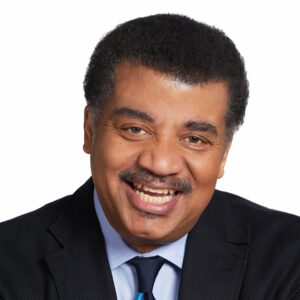About This Episode
Can you listen to a picture of the universe? Neil deGrasse Tyson and comic co-host Chuck Nice welcome back Chandra X-ray Observatory data-sonification expert Kim Arcand of the to explore how translating cosmic data into sound lets us sense the universe in entirely new ways.
We break down what sonification is and why it helps both sighted and non-sighted people interpret information hidden in invisible wavelengths like X-rays and infrared. From reconstructing images through sound to rethinking how we perceive radio signals in movies like Contact, Neil and Chuck trace how these translations shift our understanding of space itself.
With Chandra’s razor-sharp resolution, we explore how it is perfect for studying black holes, pulsars, and high-energy cosmic events. We break down stellar explosions, the bizarre behavior of Eta Carinae, and how 3D-printed nebulae help scientists analyze structures like the Homunculus.
LEarn about the power of sonification for detecting patterns, color-mapping choices in astrophysics, the eerie “sounds” of black holes, and how visualization can reveal details that raw numbers alone might miss. They dive into VR for space missions, coordinated global telescope campaigns, and explain why every new observatory opens a fresh cosmic window.
Thanks to our Patrons William Ash, Jonathan Bond, Frank Clowes, Aureus Griffith, Steven Tull, Jane, Rachel Banks, Dave, Colin Segovis, Danilo Alcantara, Nick Poulos, Val Teal, jr242, Kenny MacFarlane, LT From DC, A.J. Gonzalez, Aria Vaughn, Damion King, Aluarua Borealis, Thom Sturgill, Justin Perleoni, Elizabeth Fortier, Jagger Carter, FutureFear, AI, Aaron Hardy, GillaBreed42, Leah Stoker, Shayba Muhammad, Micheal Shepard, Jyri Körmöläinen, Christopher Boggs, Robert, Alwaleed Althani, sonja, Stephen Vyskocil, Luc Sr, Gina Boyd, Nathaniel Toups, Pam Floyd, Dent, Arthur Dent, Judie Stanley, Corey Therrien, Jay Lo, Bret, Matthias Beckmann, Girlgeek101, Alek Pyers, Wingo, Ricky G, Austin, Ian Simonson, Jennifer A Ford, Mark Shaefer, Stephen Karlson, Tyler Evans, Gabriel Najul, Evan F, Jeff Soner, Stiven Miranda, Joey Ostos, Lian, Deontae R, Brian Isaman, Chris Kempel, Mike Burns, Alicia Mendez, Dan Dial, Trey Hopkins, Nater Tater, Nata, Lynn Wladen, Allison T, Daniel Hall, Mick JB, Dick Cox, Yonatan Broder, Clayton Smith, DBP19, Justin Cooke, Braulio A Rivera, TurboShark, Tmac, Cory Hack, Nick Haner, Stephy B, Sophie, Will Atwood, Julie Bradley, Greg, Davey Qasem, Jeff, Malerie Corniea, Micki Thomas, and Will P. for supporting us this week.
NOTE: StarTalk+ Patrons can listen to this entire episode commercial-free.




 Unlock with Patreon
Unlock with Patreon


 Become a Patron
Become a Patron